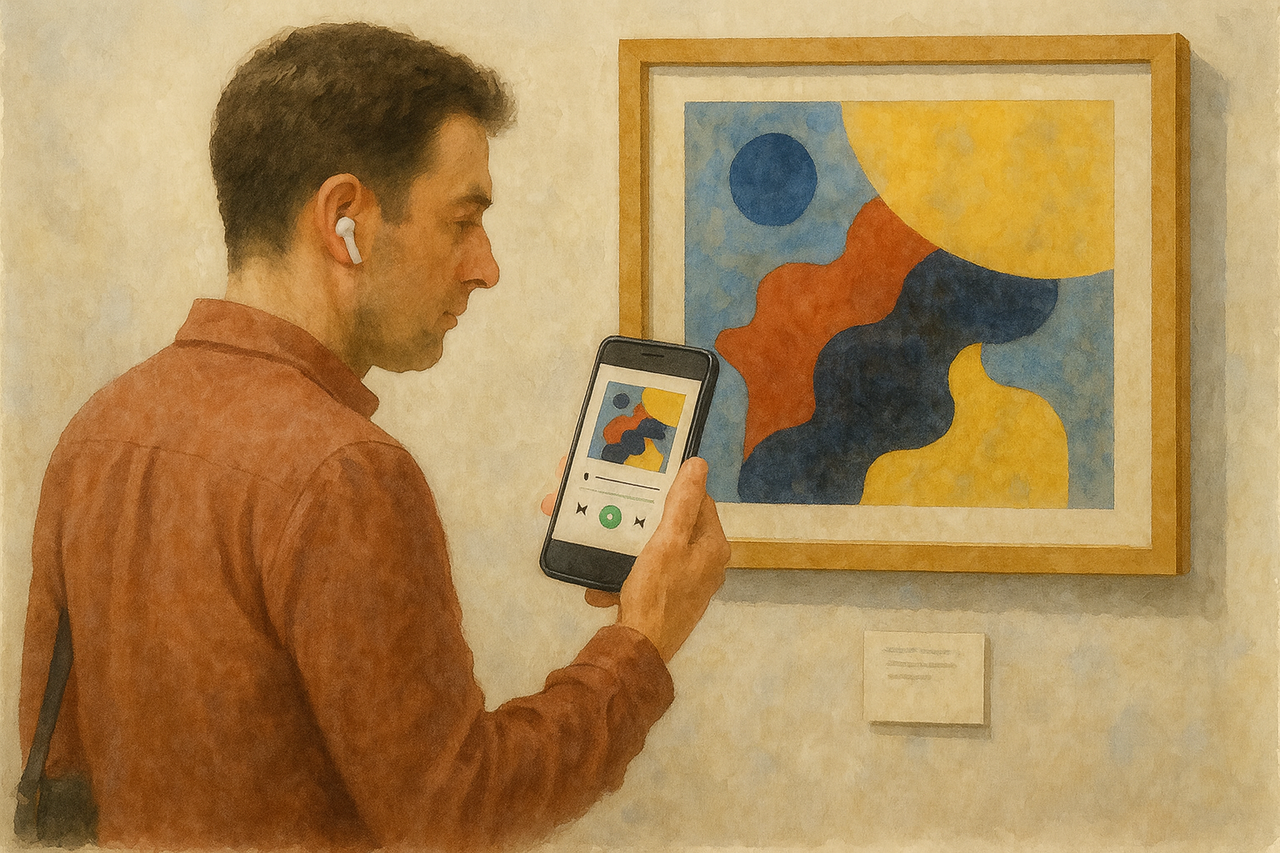Building a digital museum guide that guests may actually want
We believe that our upcoming digital service will create an inclusive, personal and altogether useful companion for the SMK guest. But only if we get things exactly right.

For years, at SMK, we’ve almost solely kept our eyes on the open web.
We’ve sought to amplify the museum’s work and increase the reach of the collection far beyond our physical walls. The original working title for this endeavour was SMK Open, and that kind of stuck.
This multi-year project has not only been worthwhile. We actually – in all modesty – consider it quite the success, with significant take-up, much re-use, a democratisation of access, and a very notable de facto crowdsourcing of metadata.
We love open access and open protocols, and we enjoy making the collection as accessible, explorable and usable as possible.
But now we’re ready to take on an altogether different challenge. To develop an inspiring, attractive and actually useful digital companion to the physical museum visit. We think of it (and like I mentioned, these things tend to stick) as SMK Link.
What is SMK Link?
SMK Link is (or rather, will be) a browser-based mobile guide to the museum and the art on display. The interface is based on QR codes and the guest’s own device and the service lets the guest access all the relevant information and material that we have to offer.
We envision two main use-cases.
The guest arrives in the museum lobby looking for a tool to help navigating the museum. Introductions to the exhibitions are presented as are audioguides currently on offer. But more importantly the guest is placed on an interactive map of the museum providing a sense of size and layout.
Or:
The guest explores the galleries more freely and is drawn to particular artworks that he/she wants to explore in more detail – or simply wants to read about in his/her own language. Icons by a QR code tell the guest what to expect when scanning (audio, sign-language, video, in-depth descriptions etc.).
The latter scenario is probably the more interesting one. It’s certainly the one assuming the least pre-planning and prior knowledge on behalf of the guest.
What’s in a scan?
Now, as an SMK guest, a QR code scan is not only your gateway to information.
It’s also a signal to us that you care about a specific artwork (it’s a ‘like’ if you will). And so, scanning an artwork will place it in your collection – a list that you may delve into later in the museum cafe, in a comfortable chair in the next room, on the train-ride home or in your own couch.
It also signals the general direction of your interest. And so may be used to suggest where to go next (‘You seem really into ships, care for some suggestions?…).
And finally, since we know where the artworks is placed, the scan gives us your location. This in turn unlocks a broad range of opportunities related to the ancient museum art of wayfinding. We can immediately show your location on a map. But we can also show you where you’ve been (or at least where you’ve scanned) and where you haven’t been. This could help answer two very real questions posed by many visitors: A) Have I missed something? and B) Are we done soon?
It’s easy to imagine this being gamified to a degree, and maybe that’s something we’ll pursue.
But I don’t want this!
Recently, Rosa Sala Rose, CEO of the company Nubart, published findings indicating that very few guests use museum apps.
I’m not surprised. I very rarely use them myself. I expect at least some hassle installing and more hassle figuring out some arbitrary interface. But in an unfamiliar museum setting I also very rarely crave more information. Typically, I’m somewhat overwhelmed as it is.
But also I very rarely see a clearly stated reason to install that would make up for any of these shortcomings.
A digital companion to a museum visit is no easy sell, at least not beyond the occasional superfan. But I also think one of Nubart’s final comments rings true:
Museums are experts at removing obstacles to cultural experiences. But in the digital realm, many have unintentionally put one of the biggest obstacles in the way: requiring a download. The institutions with higher digital engagement are showing that sometimes, the best app is no app at all.
Or in other words: What you’re offering needs to be actually relevant, extremely clearly communicated and utterly easy to use. No-one wants to study a new interface and no-one wants a service just because it exists.
This means no pop-ups, no newsletter sign-ups or other marketing, no latency, and very little need for navigation. In fact, SMK Link will have to feel so natural, and be so unobtrusive that you will be led to believe that it was easy to build. We don’t expect it to be but we really can’t wait to get started.
And once we’re done, we hope you’ll drop by SMK and hold us to all our promises 🤗
This post was written by: Jonas Heide Smith (jhs@smk.dk)